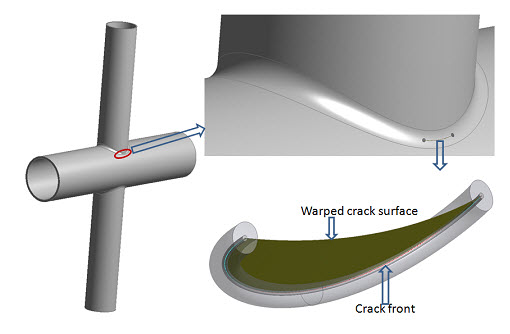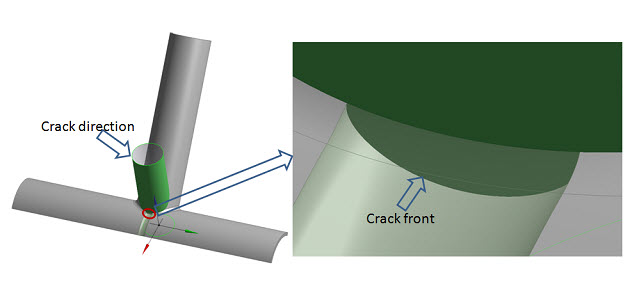The following two models with surface flaws are considered for analysis:
This model is fixed at one face of the block and a pressure load is applied on the opposite face. The block has a semicircular surface flaw at the center of one longitudinal face in the thickness direction--a crack is perpendicular to one of the surfaces of the rectangular block--with a 20 mm radius, as shown:
A torus is created around the crack front to control the mesh at the crack front. The objective is to find KI along the crack front and validate the results with reference results.[1][2][3]
Following is the semicircular crack and torus along the crack front used to create a sweep mesh with SOLID186:
A semi-elliptical warped surface flaw at the tubular joint is analyzed to obtain mixed-mode SIFs (KI, KII and KIII) along the crack front:
The problem consists of two tubular members attached to each other by a welded joint. The tubular members have outer diameters of 323.85 mm (D1), 219.08 mm (D2), and thicknesses of 15.88 mm (t1) and 8.18 mm (t2), respectively. The semi-elliptical surface crack lies on a plane parallel to the radial direction of the heavier running pipe.
A torus is created around the crack front to control the mesh at the crack front. The semi-elliptical surface crack at the weld toe is warped along the welded joint and it is perpendicular to the outer surface of the 323.85 mm diameter pipe in the thickness direction.
Following are the crack dimensions:
The warped crack profile at the welded joint is created via the interaction of a rotated semi-ellipse on the 323.85 mm diameter pipe and an extruded circle normal to the inner surface of the same pipe at the welded joint, as shown:







